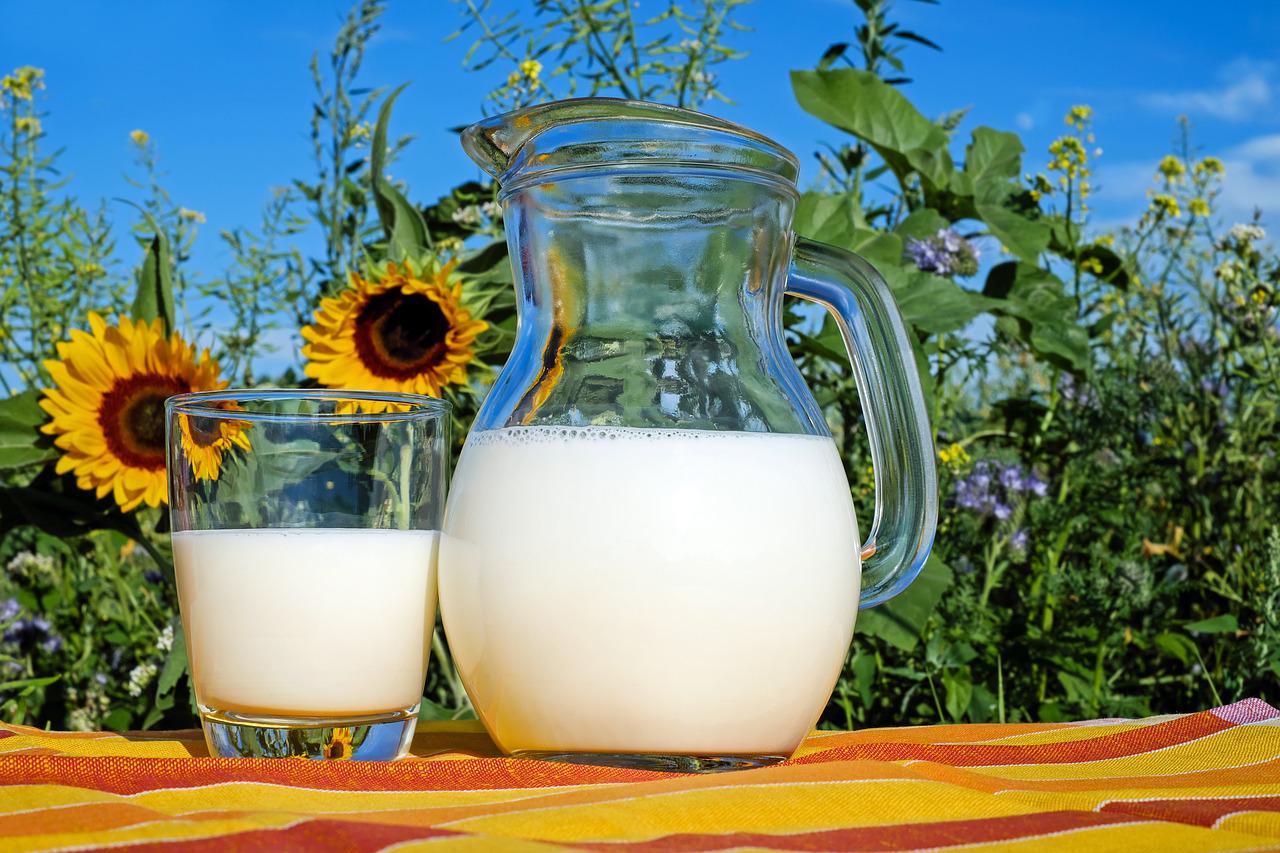There is an opinion that such a necessary product for children as milk is not useful for adults and is even harmful. Milk allegedly can not only cause indigestion, but also lead to a number of serious diseases, including cancer. We decided to check whether milk is really so dangerous to drink as an adult.
A Google search returns approx. 407,000 results for the query “milk is harmful after 30 years”, approximately 1.31 million - according to the phrase “milk is harmful after 40 years” and 1.56 million, if you type “milk is harmful after 50 years” in the search bar. It turns out that the harm of milk seems to increase with age. Milk is accused of increase risks of developing cardiovascular diseases and emergence memory problems. Eat messagesthat milk contributes to the leaching of calcium from the body, provokes edema and obesity, and increases the risk prostate cancer And bladder in men and breast cancer And uterus in women. At the same time, the law “On the consumer basket” assumed (concept abolished in 2020) that an adult should consume 290 kg of dairy products and milk per year. A Ministry of Health calls “rational” is the total consumption of 50 kg per year of milk, kefir, yogurt with a fat content of 1.5–3.2% and 60 kg of the same products with a fat content of 0.5–1.5%.
In milk and dairy products contained calcium, vitamin B12 and protein, which our body needs for the functioning of the muscular and skeletal systems. Milk also contains the carbohydrate lactose, for the digestion of which the body must produce the enzyme lactase in the required quantity. Ability to digest lactose appeared in the human population only 7,500 - 10,000 years ago in those regions where cows were domesticated. Today, 80% of people of African and Hispanic descent and more than 90% of people of Asian descent have significantly higher lactase levels after weaning. is decreasing, meaning older children and adults in these ethnic groups are unable to digest large quantities of milk. At the same time, 80–85% of people from the northwestern regions of Europe produce lactase throughout their lives, which makes it possible for them to consume milk in adulthood.
For many years, scientists from different countries have been looking for patterns between the consumption of milk and dairy products and the development of any diseases. Let us immediately note that they did not consider the question of whether adults with lactose intolerance should drink milk, since in this case milk consumption is guaranteed will lead to digestive problems.
Milk and the risk of fractures
In 1997, scientists from Massachusetts came concluded that significant (two or more glasses per day) milk consumption did not protect women aged 34 to 59 years from the risk of fractures. In 2014, Swedish scientists even notedthat women who drink more than three glasses of milk per day have an increased risk of fractures. However, the researchers caution against taking these results too literally, since they were obtained observationally. Therefore, it cannot be ruled out that those who were initially at greater risk of fractures drank large amounts of milk to prevent them. Moreover, the first study examined the effects of calcium supplementation on fracture prevention in addition to milk. Researchers also did not find a significant effect of such supplements, that is, calcium received from food was not a guarantee of bone strength. In 2015, a group of scientists from New Zealand analyzed 59 scientific publications on the relationship between milk consumption and the risk of fractures. They concluded that bone mineral density increased slightly two years after increasing calcium intake, but remained unchanged thereafter, suggesting that milk intake or calcium supplements may not provide sufficient protection against fractures.
From the data available today it follows that drinking milk in adulthood is unlikely to protect a person from fractures, but at the same time it is not capable of causing them, “washing out calcium from the bones.” Researcher and nutritionist Gail Cresci of the Cleveland Clinic fails bottom line: “There is not enough evidence to justify limiting milk consumption.” The conclusions look similar meta review, published in the journal Clinical and Experimental Research on Aging: “There is no scientific reason to remove a food rich in calcium and other important nutrients from the diet of large populations.”

Milk and cardiovascular disease
There is also ample research into the consumption of dairy products, as well as milk, and the risk of cardiovascular disease (CVD). The fats in milk, as in other animal products, are saturated, that is, they raise low-density lipoprotein (bad cholesterol) levels. Accumulating on the walls of blood vessels, these substances impede blood flow and can cause a stroke. The most complete answer to the question of how the consumption of milk and dairy products is related to the risk of CVD is answered by meta-analysis, published in 2017. Scientists analyzed 29 cohort studies with nearly a million participants. They talked about milk, fermented dairy products, cheese and yogurt. The researchers concluded that consuming these foods does not increase the risk of coronary heart disease or other CVDs. Moreover, eating 10 g of cheese per day reduces the risk of CVD by 2%. Also, scientists did not find an increase in the risk of mortality from all causes when consuming milk and dairy products.
Other large meta-study was published in the Journal of Clinical Nutrition in 2019. Scientists came to the following conclusions: consumption of all dairy products reduced the risk of mortality from all causes by 2%, and consumption of cheese - by 8%. Dairy products generally reduced the risk of death from cerebrovascular diseases (stroke, blockage, stenosis and other damage to the arteries of the brain) by 4%, and milk - by 7%. At the same time, milk consumption increased the risk of death from coronary heart disease (CHD) by 4%, and fermented dairy products, such as yogurt, reduced this figure by 3%. Scientists, however, made a reservation that it is premature to talk about a cause-and-effect relationship between milk consumption and the risk of coronary disease, since we were talking about the consumption not only of milk, but of milk together with other dairy products. Instead they recommended choose milk with a lower fat content. Researchers from the Finnish Institute of Public Health and Clinical Nutrition determinedthat only consumption of more than a liter of milk with a fat content of 3.5% per day is associated with an increased risk of CHD. Jyrki Virtanen, one of the authors of the article, fails summary: "Only consuming milk in very large quantities may be harmful, but there is no research to suggest that moderate consumption is harmful."
Milk and cancer pathologies
Increased risk of malignancy from milk consumption explain primarily because during the period when a cow gives milk, her estrogen level is increased. In 2005, one study tied up the development of cancer of the mammary glands, ovaries and uterus with the ingestion of large doses of estrogen from milk and dairy products. However, later studies refuted this connection. Scientists gave me something to drink 60 experimental mice (30 males and 30 females) were given milk containing different levels of hormones for just over a week, and then their reproductive systems were examined. No changes in the animal’s organs occurred until the dose of hormones in the milk was increased to a level that was 1000 times higher than the normal content in regular milk. Similar experiments on humans are, of course, impossible due to their unethicality, but the author of the study, Gregor Majic from the Center for Animal Genomics of the University of Ljubljana calls It is highly unlikely that humans are so much more sensitive to estrogen compared to mice. Laura Hernandez, who studies breastfeeding biology at the University of Wisconsin (USA), Agree with his colleague regarding the safety of hormones in milk: “After all, human milk also contains hormones - we are mammals.”
Moreover, even lactose intolerance does not make drinking milk completely impossible. Stanford nutritionists held experiment: people suffering from intolerance were offered to drink milk for eight days, gradually increasing the dose - from 118 ml to 710 ml. Symptoms of intolerance did not appear immediately, but only when the individual accumulation threshold was exceeded. Thus, scientists done the conclusion is that even patients with milk intolerance can consume it in limited quantities.
Thus, for those who do not have lactose intolerance, scientists did not find any significant harm from consuming milk in adulthood. There are no studies that reliably demonstrate an increase in mortality from all causes or an increase in the risk of developing cancer depending on the volume of milk consumed. However, data suggest that milk and dairy products in general reduce the risk of cerebrovascular pathologies. However, you should still not abuse milk; daily consumption of more than a liter of fat milk can increase the risk of coronary heart disease. In other words, giving up cappuccino in favor of Americano or completely eliminating cereal with milk for breakfast just because you are no longer a child is definitely not necessary.

Mostly not true
Read on the topic:
If you find a spelling or grammatical error, please let us know by highlighting the error text and clicking Ctrl+Enter.






